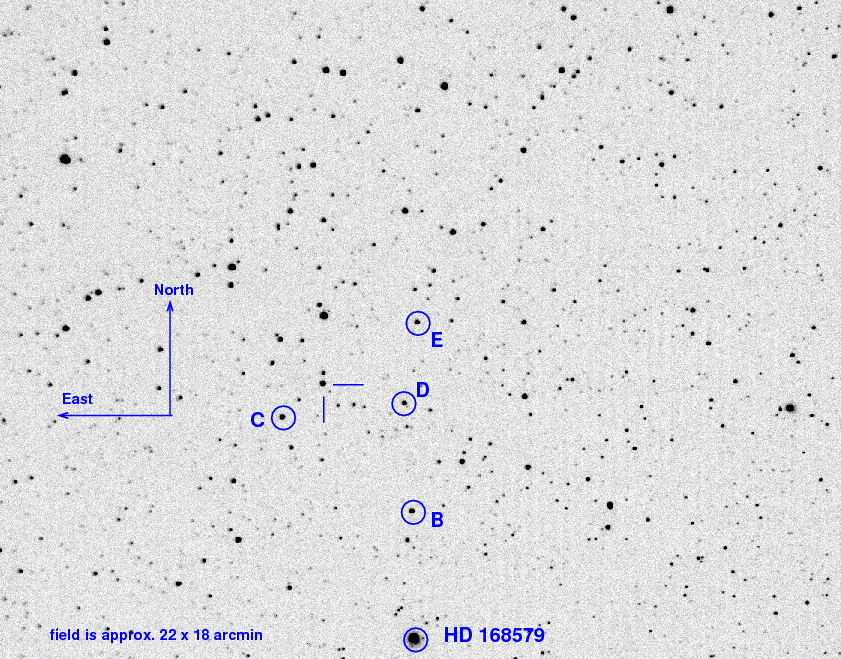
On the night of Mar 24/25, 2018, I acquired a set of observations of the likely black-hole system MAXIJ1820+070, (also known as ASASSN-18ey ). I made measurements over roughly 2.5 hours at high airmass, with a cadence of about 15 seconds. That's better than my previous night's work (25 seconds), but still not good enough ...
The main setup was:
Notes from the night:
This optical and X-ray and radio transient is likely a black hole accreting material at a higher-than-usual rate. It has been the subject of many observers over the past two weeks -- see the trail of telegrams that include
The object is located at
RA = 18:20:21.9 Dec = +07:11:07.3
A chart of the field is shown below. The size of the chart is about 22 by 18 arcminutes.
I've marked the location of several comparison stars, which also appear in light curves below. Stars C, D, and E are mentioned by the Tomoe Gozen team in ATel 11426, but all three are rather red, with (B-V) ranging from 1.14 to 1.37. Star B is one of the bluest nearby bright stars, with (B-V) = 0.52.
star UCAC4 B V ---------------------------------------------------- B 486-079513 12.975 12.454 C 486-079608 13.968 12.830 D 486-079523 14.637 13.272 E 487-077858 14.637 13.272 ----------------------------------------------------
Again, note that the early observations in this set were taken at airmass greater than 2. In the light curves below, one can see that both MAXI and the blue star "B" creep up in brightness slightly at early times, due to their bluer color (and so greater extinction) than the bulk of the stars in the ensemble. The creep amounts to only about 0.02 mag during the first hour. I have not tried to correct for it.
Image adjustment factor shows the decreasing extinction as the field rose higher in the East, with occasional outliers due to trailed images.
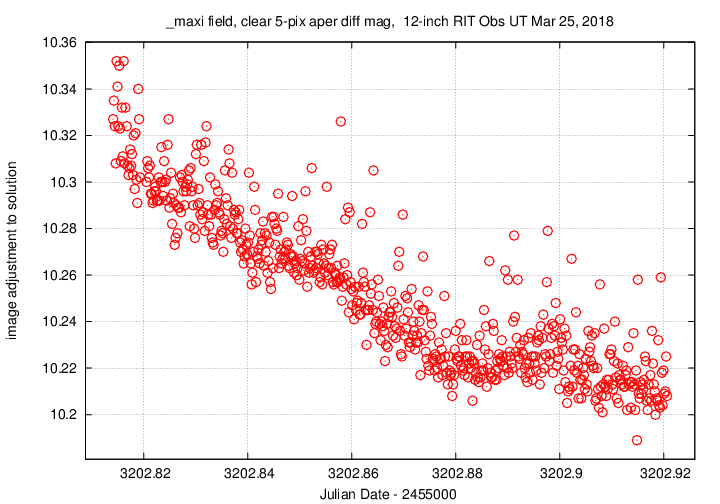
Using aperture photometry with a radius of 5 pixels (radius of 6.6 arcsec), I measured the instrumental magnitudes of a number of reference stars and the target. Following the procedures outlined by Kent Honeycutt's article on inhomogeneous ensemble photometry, I used all stars available in each image to define a reference frame, and measured each star against this frame.
Sigma-vs-mag plots show that the floor was about 0.008 mag. The brightest outlier is a saturated star, and the outlier around instrumental magnitude is MAXI J1820+070.
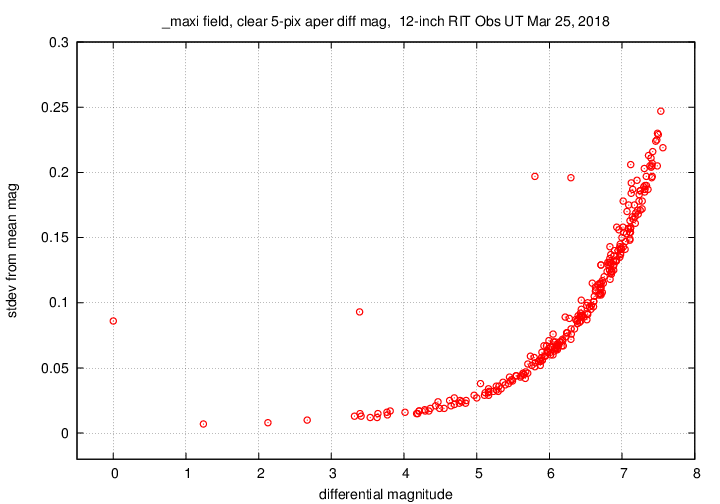
Here are light curves of the variable and the field stars. The star marked VEND is a long-period semiregular variable; see the posts by Robert Fidrich in the AAVSO's thread for MAXI J1820+070 for the details.
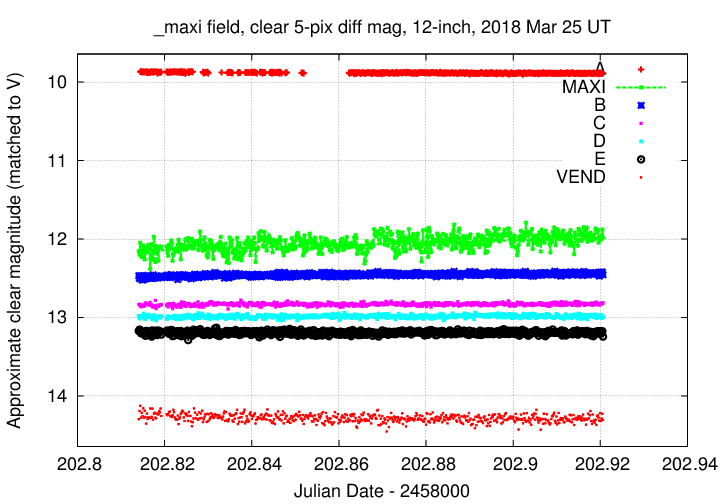
I used the UCAC value for the V-band magnitude of star "B" = UCAC4 486-079513 to shift the ensemble magnitudes to the standard V-band scale -- but remember that these are UNFILTERED measurements.
Here's a closeup on the variable. I'll connect the dots to make its behavior a bit easier to see.
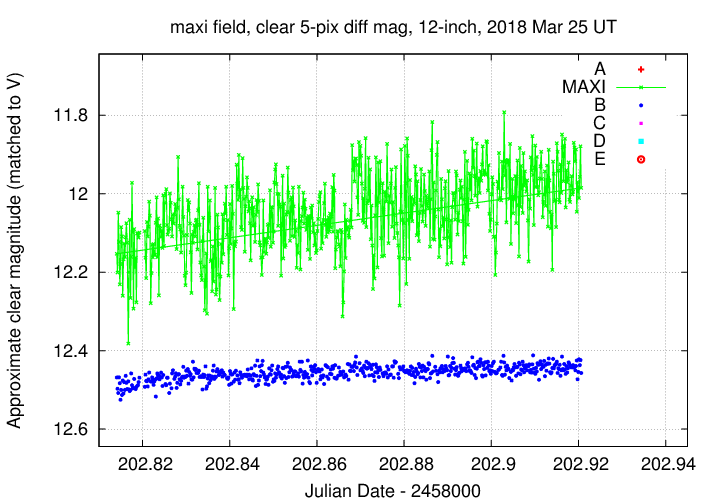
You can download my measurements below. A copy of the header of the file is shown to explain the format.
# Measurements of MAXIJ1820+070 made at RIT Obs, UT 2018 Mar 25, # in good conditions (but high airmass), # by Michael Richmond, # using Meade 12-inch LX200 and ATIK 11000. # Exposures 8 seconds long, no filter. # Tabulated times are midexposure (FITS header time - half exposure length) # and accurate only to +/- 1 second (??). # 'mag' is a differential magnitude based on ensemble photometry # using a circular aperture of radius 5 pix = 6.7 arcseconds. # which has been shifted so UCAC4 486-079513 has mag=12.454 # which is its V-band magnitude according to UCAC4. # # UT_day JD HJD mag uncert Mar25.32050 2458202.82050 2458202.82037 12.095 0.014 Mar25.32066 2458202.82066 2458202.82053 12.163 0.013 Mar25.32083 2458202.82083 2458202.82070 12.215 0.013
Last modified 3/25/2018 by MWR.